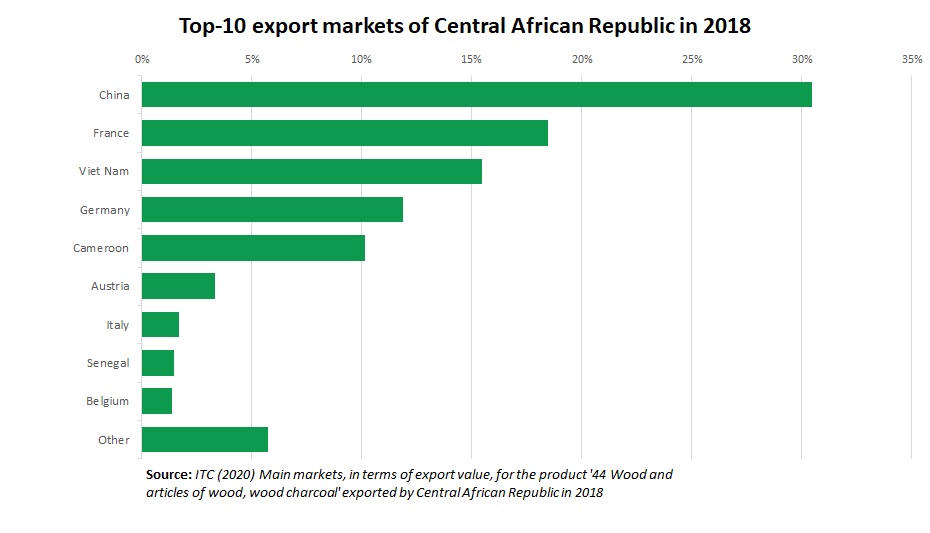Overview of timber sector of Central African Republic
Forest concessions
(2018)
m3 of logs exported
(2017)
m3 of logs produced
(2017)
Supply chain actors
All of the production forests of the south-west massif are attributed in the form of PEAs (Permis d'Exploitation et d'Aménagement - Logging and Development Permit). The massif is split into 14 PEAs, attributed to 8 companies / corporate groups. 4 of them account for over 80% of the total logs produced.
In CAR, 8 out of 10 (82%) allocated forest concessions are managed and inventoried. These statistics are well above those of other countries in the Congo Basin where only 55% and 70% of concessions have been inventoried.
Production and processing
Main harvested species
Of the 300 potential timber species found in the closed forest area, only 34 are typically harvested. 80% of the production concerns 4 species. Sapelli (Entandrophragma cylindricum) alone accounts for more than half of the production, followed by Mukulungu (Autranella congolensis), Iroko (Milicia excelsa) and Ayous (Triplochiton scleroxylon). Next are Padouk (Pterocarpus spp.), Dibetu (Lovoa trichilioides), Tali (Erythrophleum ivorense) and Sipo (Entandrophragma utile).
According to national legislation currently in effect in CAR, forest concessionaires must process 70% of the logs they harvest within a processing unit (sawmill, peeling unit, etc.), for the main species that are harvested (so-called 1st category species).
According to ITTO (2019) the industry of the Central African Republic produced in 2017 about 627 thousand m3 of logs. However, other sources (CDF 2018) indicate that 530,000 m3 of logs were produced in 2017, of which nearly 280,000 m3were exported in the form of logs and 80% of the sawnwood produced was exported.Export
The timber industry of the CAR is relatively small, but still accounts for 40% of the country’s export earnings.

Logistics infrastructure
Due to the landlocked location of the CAR and the relatively poor transportation infrastructure the costs to export material are relatively high. Transport of timber via road to Cameroon or by river and rail to Pointe Noire in the Republic of the Congo is costly, and consequently there is an incentive to process materials in the country instead of exporting them.
Data table
| Production (X 1000m3) |
Imports (X 1000m3) |
Domestic consumption (X 1000m3) |
Exports (X 1000m3) |
|
|---|---|---|---|---|
| logs | 627 | 0 | 299 | 328 |
| Sawnwood | 51 | 0 | 36 | 15 |
| Veneer | 2 | 0 | 2 | 0 |
| Plywood | 0 | 1 | 1 | 0 |
ITTO (2019), data 2017


